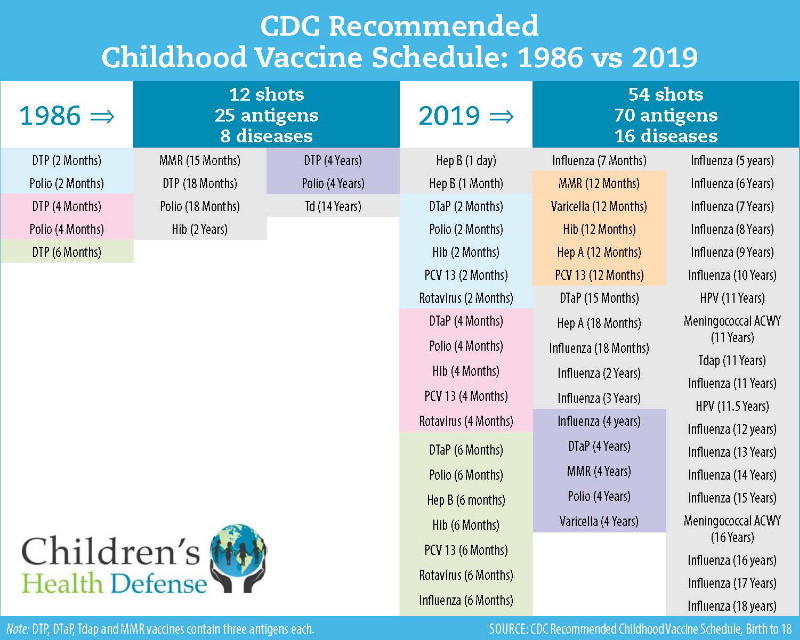CDC Recommended Vaccine Schedule 1986 vs. 2019
In the early 1980s, children received three vaccines for seven illnesses—two combination vaccines (diphtheria-tetanus-pertussis and measles-mumps-rubella) and a polio vaccine—totaling two dozen doses by age 18. In the decade following 1989 (beginning soon after the NCVIA’s implementation), the CDC packed multiple doses of several more vaccines into the childhood schedule, including those for Haemophilus influenzae type b (Hib), hepatitis B (on the day of birth) and varicella (chickenpox), as well as a rotavirus vaccine (withdrawn a year after its introduction) .112 Next, in the first decade of the 2000s, the CDC recommended an even larger batch of new vaccines, going after not just children but also adolescents and adults: hepatitis A, HPV, meningococcal conjugate, pneumococcal conjugate, rotavirus (again) and zoster (shingles), along with an adult tetanus-diphtheria-pertussis booster (Tdap) and a massive expansion of influenza vaccine recommendations for all ages . At present, the childhood vaccine schedule requires almost six dozen doses through age 18 for sixteen diseases.

Sign up for free news and updates from Children’s Health Defense. CHD focuses on legal strategies to defend the health of our children and obtain justice for those injured. We can't do it without your support.


